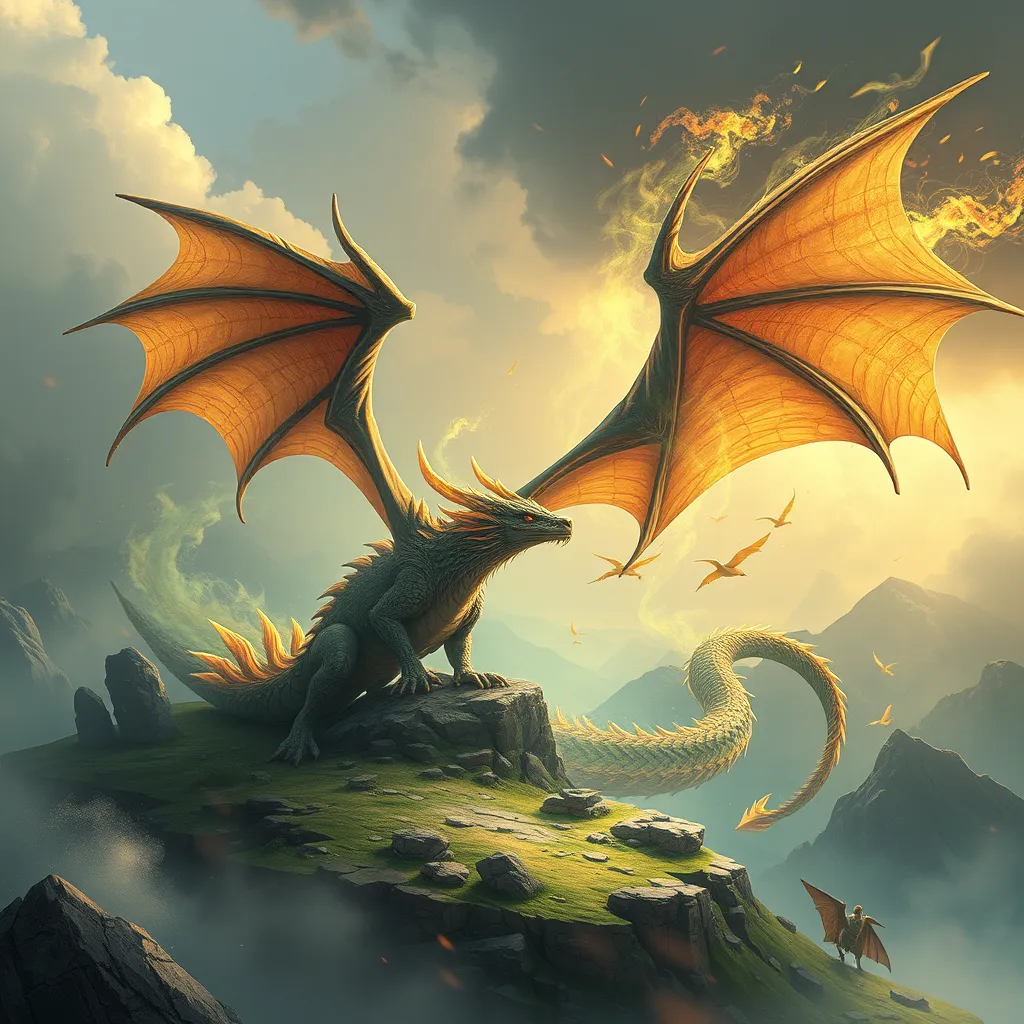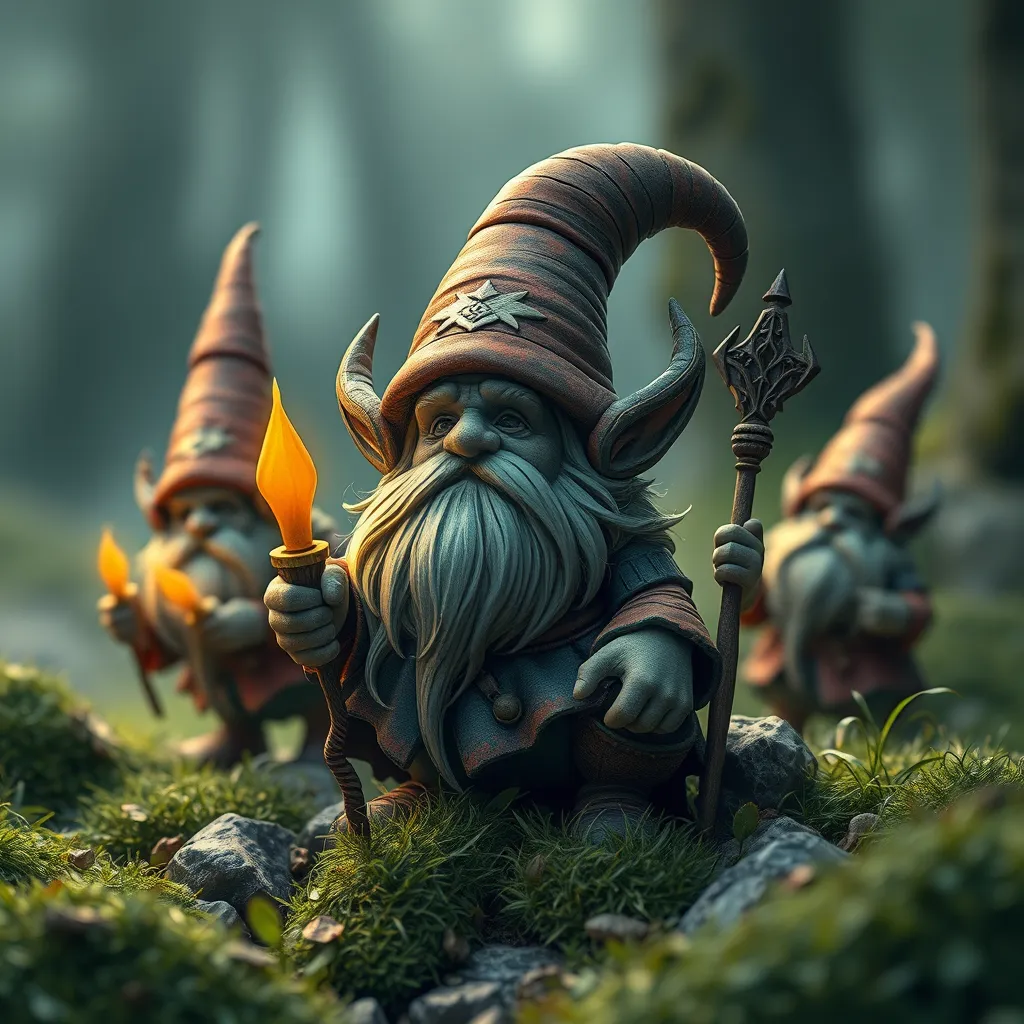The Dragon’s Power: Analyzing the Different Abilities and Powers of Dragons in Myth and Legend
I. Introduction
Dragons have captivated the human imagination across cultures and eras, representing a complex tapestry of symbolism, power, and mystique. Defined as large, serpent-like creatures often depicted with wings and the ability to fly, dragons hold significant roles in mythology, folklore, and literature. Their portrayal varies widely, from fearsome adversaries to wise protectors. This article delves into the diverse abilities and powers of dragons as depicted in various legends, exploring their historical context, elemental powers, magical abilities, and cultural significance.
II. Historical Context of Dragons in Mythology
The origins of dragon mythology can be traced back thousands of years, with evidence of dragon-like creatures found in ancient Mesopotamian, Egyptian, and Chinese texts. Each civilization has contributed to the evolving image of dragons, often reflecting the values and fears of their society.
- Mesopotamia: Dragons like Tiamat represented chaos and destruction.
- Egypt: The serpent god Apep embodied the struggle against chaos.
- China: Dragons symbolize power, strength, and good fortune.
Over time, the imagery and symbolism associated with dragons have evolved. In the West, dragons became synonymous with evil and destruction, often depicted as foes to be slain by heroes. In contrast, Eastern dragons are often viewed as benevolent beings, associated with water, agriculture, and prosperity.
III. The Elemental Powers of Dragons
Dragons are often associated with the elements, with different cultures attributing various elemental powers to them. These elemental associations play a significant role in their myths and legends.
A. Fire-breathing dragons: Origins and interpretations
Fire-breathing dragons are perhaps the most iconic representation of dragons in Western mythology. These creatures are often depicted as fierce adversaries, breathing fire to protect their treasures or territory. The origins of this imagery may stem from natural phenomena, such as volcanic eruptions or wildfires, which were interpreted as the wrath of powerful beings.
B. Water and ice dragons: Myths and regional variations
In contrast to their fiery counterparts, water and ice dragons are associated with the ocean and cold climates. For instance:
- Japanese mythology: The dragon Ryujin governs the seas and is believed to control storms and tides.
- Scandinavian folklore: Ice dragons inhabit icy realms, often depicted as guardians of treasures hidden in frozen landscapes.
C. Earth and stone dragons: Their roles in folklore
Earth and stone dragons symbolize stability and strength. They are often linked to mountains, caves, and the earth itself. In many cultures, these dragons are seen as guardians of the land, embodying the spirit of the earth.
IV. Magical Abilities and Powers
Beyond their elemental powers, dragons are often endowed with magical abilities that enhance their mystique and influence in mythology.
A. Shape-shifting and transformation abilities
Many legends portray dragons as shape-shifters capable of transforming into other creatures or humans. This ability allows them to interact with humanity in various forms, sometimes for benevolent purposes, other times for trickery.
B. Telepathy and mind control: Legends of mental influence
Some dragons are said to possess telepathic abilities, allowing them to communicate with humans or exert mental influence over others. This power often highlights the dragon’s wisdom and intelligence, reinforcing their role as ancient beings with vast knowledge.
C. Healing and regenerative powers attributed to dragons
In various myths, dragons are credited with extraordinary healing abilities, often using their powers to heal the wounded or rejuvenate the land. This aspect emphasizes their connection to life and renewal.
V. The Role of Dragons in Heroic Tales
Dragons play crucial roles in heroic tales, often serving as both adversaries and allies to heroes.
A. Dragons as adversaries: The archetype of the dragon slayer
The archetype of the dragon slayer is prevalent in Western mythology, where heroes like St. George and Beowulf confront dragons to prove their valor. These tales often symbolize the triumph of good over evil.
B. Dragons as allies: Examples of beneficial dragon characters
Conversely, dragons can also be depicted as allies. For example:
- In Chinese mythology: The dragon frequently assists heroes in their quests.
- In modern fantasy: Characters like Falkor from “The NeverEnding Story” portray dragons as supportive companions.
C. The moral and ethical implications in dragon lore
The presence of dragons in these tales often raises moral and ethical questions about power, responsibility, and the nature of good and evil. The complex relationships between dragons and humans reflect deeper societal values and conflicts.
VI. Cultural Variations of Dragon Powers
The characteristics and abilities of dragons can differ significantly between cultures, influenced by historical, geographical, and social factors.
A. Eastern vs. Western dragon characteristics and abilities
In Eastern cultures, dragons are often seen as wise, benevolent creatures associated with water and fertility, while Western dragons are typically portrayed as malevolent beings to be slain. This dichotomy reflects contrasting cultural values and fears.
B. Unique dragon legends from indigenous cultures
Indigenous cultures around the world have their own unique dragon legends, such as:
- Quetzalcoatl: The feathered serpent god in Aztec mythology.
- Amaru: In Incan mythology, a serpent that brings rain and fertility.
C. The influence of geography on dragon powers and attributes
The geographical environment has a substantial impact on dragon attributes. Mountainous regions may foster the image of earth-bound dragons, while coastal areas might inspire tales of sea serpents and water dragons.
VII. Modern Interpretations and Representations
In contemporary literature and media, dragons continue to evolve as symbols of power and mystery.
A. Dragons in contemporary literature and media
Modern fantasy literature, such as “The Hobbit” and “A Song of Ice and Fire,” has redefined dragons, presenting them as complex characters with their own motivations and narratives.
B. The impact of fantasy genres on dragon mythology
The fantasy genre has played a significant role in reshaping the perception of dragons, portraying them as multifaceted beings rather than mere monsters.
C. The resurgence of dragon symbolism in popular culture
Dragons have seen a resurgence in popular culture, from movies to video games, often symbolizing strength, wisdom, and the struggle between good and evil.
VIII. Conclusion
Throughout history, dragons have represented a multitude of powers and roles in myth and legend. From their elemental abilities to their magical prowess, dragons embody the complexities of the human experience, reflecting our fears, aspirations, and moral dilemmas. Their enduring legacy in human imagination illustrates a timeless fascination with these magnificent creatures, ensuring that dragons will continue to inspire and captivate future generations.




